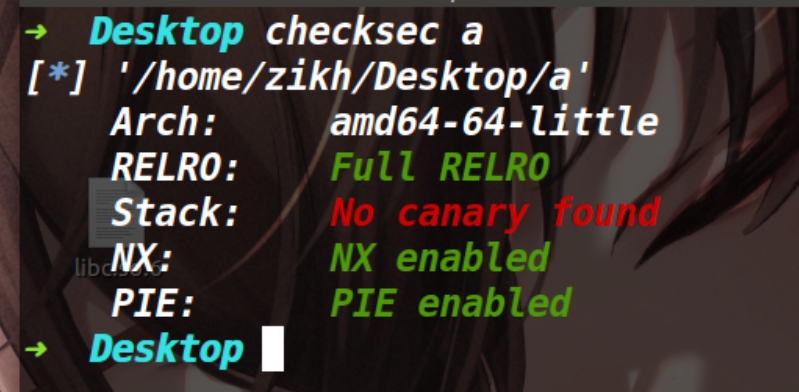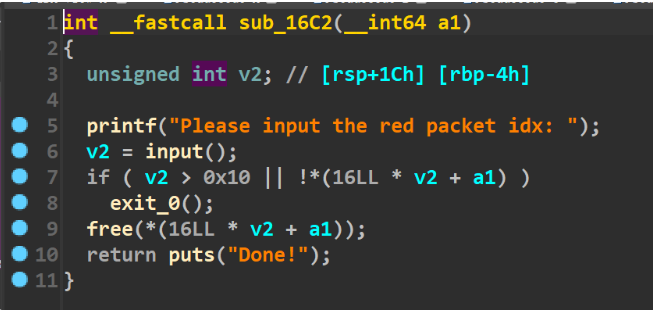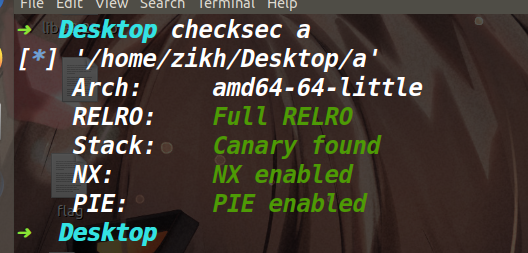关于tcache stashing unlink attack的学习总结
tcache stashing unlink attack
介绍:在2.29的libc版本中,进行了unsorted bin的双向链表完整性检查。因此unsorted bin attack也就失效了,不过在libc2.29的版本中tcache stashing unlink attack却可以达到类似的效果(在一个任意地址写入一个libc地址)。
原理:在2.29的libc中,如果我们需要的chunk位于了small bin里面,当我们将chunk从small bin拿出来的时候,还会去检查当前small bin链上是否还有剩余堆块,如果有的话并且tcache bin的链上还有空余位置(tcache bin不能为空),就会将剩余的那个堆块给链入到tcache bin中。而将small bin中的堆块链入到tcache bin中的时候没有进行双向链表完整性的检查,此时攻击那个即将链入tcache bin的堆块的bk指针,即可向任意地址写入一个libc地址。
注意:上述有一个看似矛盾的地方,如果tcache bin不为空并且没有满,才会将small bin里的堆块给链进来,但是tcache bin不为空的话,正常情况下会直接从tcahce bin里取,并非去small bin里找。但是calloc函数有个特性,它不会从tcache bin里取堆块,因此该攻击必须要利用calloc函数才行。
适用版本:目前适用于所有带tcache的glibc版本(2.26–2.36)
使用前提:
- 能使用calloc分配堆块
- 可以控制small bin中的bk指针
- small bin中最少要有两个堆块
攻击效果:在任意地址写一个Libc地址(main_arena+96)
利用思路:
- 先进行libc地址以及堆地址的泄露(libc地址不是必须的,而堆地址是必须的,因为我们伪造bk指针的时候,不能破坏fd指针,需要获取堆地址,重新还原fd指针)
- 然后将tcache bin中只留6个堆块(这样small bin链入tcache bin后,tcache bin就会直接装满,防止程序继续通过我们篡改的bk指针继续往下遍历)
- 再做出至少两个位于small bin中的chunk(可以通过切割unsorted bin的方式,让剩余部分的堆块进入small bin或者当遍历unsorted bin的时候,会给堆块分类,让其小堆块进入small bin中)
- 利用溢出或UAF+edit等手段,篡改位于small bin中的倒数第二个堆块的bk指针为我们想要写入main_arena+96的地址 注意伪造bk的时候一定不能破坏fd指针
- 最后我们申请一个位于small bin那条链对应size中的chunk,将small bin中的一个chunk申请出来,而small bin链中的另一个堆块则进入tcache bin,在链入tcache bin的期间触发了tcache stashing unlink attack。
PS:才发现这篇文章一些图片当时没有上传,现在丢失了。看起来非常影响阅读,但是作者也没办法了(什么垃圾文章😭)。
该漏洞处的源码如下:
if (in_smallbin_range (nb)) |
相关题目
buu[2020 新春红包题]3
保护策略:


漏洞分析:

存在一个UAF漏洞
存在一个可以溢出的函数(如下)

这里可以直接溢出buf打一个栈迁移,迁移到堆上(提前布置一个rop链),执行orw来绕过沙箱。
利用思路:
虽然有UAF漏洞并且有edit函数和show函数,但这题没法打tcache poisoning,因为这题申请内存的函数是calloc,这个函数的特性是不从tcache bin中取堆块,因此我们打tcache poisoning也无法从tcache bin链上取出来堆块。而且就算能取出来堆块,也无法绕过沙箱。想绕沙箱就必须去利用那个溢出函数。
溢出函数中存在一个if检查,这里本来用unsorted bin attack的话是很好过检查的,但是在Libc为2.29的版本中对unsorted bin增加了检验双向链表完整性,无法去利用unsorted bin attack 了。不过在2.29有一种手法可以代替unsorted bin attack达到类似的效果,也就是tcache stashing unlink attack(上文对tcache stashing unlink attack做了介绍,这里就不再赘述了)
泄露地址:
因为存在UAF漏洞,配合show函数,可以轻松的泄露堆地址和libc地址。但是为了后续的利用,我们前期需要先伪造两条不同的tcache链(一条用于后续small bin中堆块的链入,一条用于让堆块进入unsorted bin,因为0x410这条链装满了,再释放掉0x410的堆块就会直接进入unsorted bin) 如下图,我们执行两次show函数即可获取libc地址和堆地址。

放入small bin中两个堆块
目前我们在unsorted bin中有一个0x410的堆块,我们先去申请一个0x300的堆块,这样剩下的0x100就会进入unsorted bin中,然后下一次申请0x400的堆块,ptmalloc就会去遍历unsorted bin将原先0x100的堆块放入small bin中。接着如法炮制再申请一个0x400的堆块,释放掉进入unsorted bin,然后申请0x300堆块,将unsorted bin中的堆块进行切割,残留的0x100堆块返回unsorted bin,最后再申请一个不等于0x100的堆块(如果正好相等的话,就直接从unsorted bin里拿出来了,只有不相等才会去遍历,然后给chunk分类),这时候就又把0x100的堆块放入到了small bin里,而此时small bin中就有两个堆块了。
篡改small bin中的bk指针
因为这道题要触发后门的话,就得让下面这个if成立,我们直接篡改small bin的bk指针为这个qword_4058+2048-0x10的值即可

篡改后small bin的情况如下

最后再申请一个0xf0的堆块即可触发tcache stashing unlink attack。
完事了利用后门,打一个栈迁移,迁移执行流到堆上,执行提前布置好的rop链执行orw即可。我是直接调用了mprotect函数让堆去变成可读可写可执行,然后直接执行orw的shellcode(这里没有难点,就不再具体阐述了)
EXP:
from tools import * |

hitcon_ctf_2019_one_punch
保护策略:


大致思路:
这道题考察的是tcache stashing unlink attack,不过由于本题开了沙箱,所以最后需要用orw获取flag。
程序给了个后门(可以调用malloc,篡改malloc_hook劫持执行流),不过需要用tcache stashing unlink attack来触发这个后门,利用libc里的一个gadget(add rsp,0x48;ret)将其写到malloc_hook里,直接控制程序执行流。
利用那个gadget能控制执行流的原因是因为程序询问size的时候,输入到栈里的数据太大了。(如下)

EXP:
from tools import * |

参考文章:
Tcache Stashing Unlink Attack利用思路-安全客 - 安全资讯平台 (anquanke.com)
https://blog.csdn.net/weixin_46521144/article/details/119536209